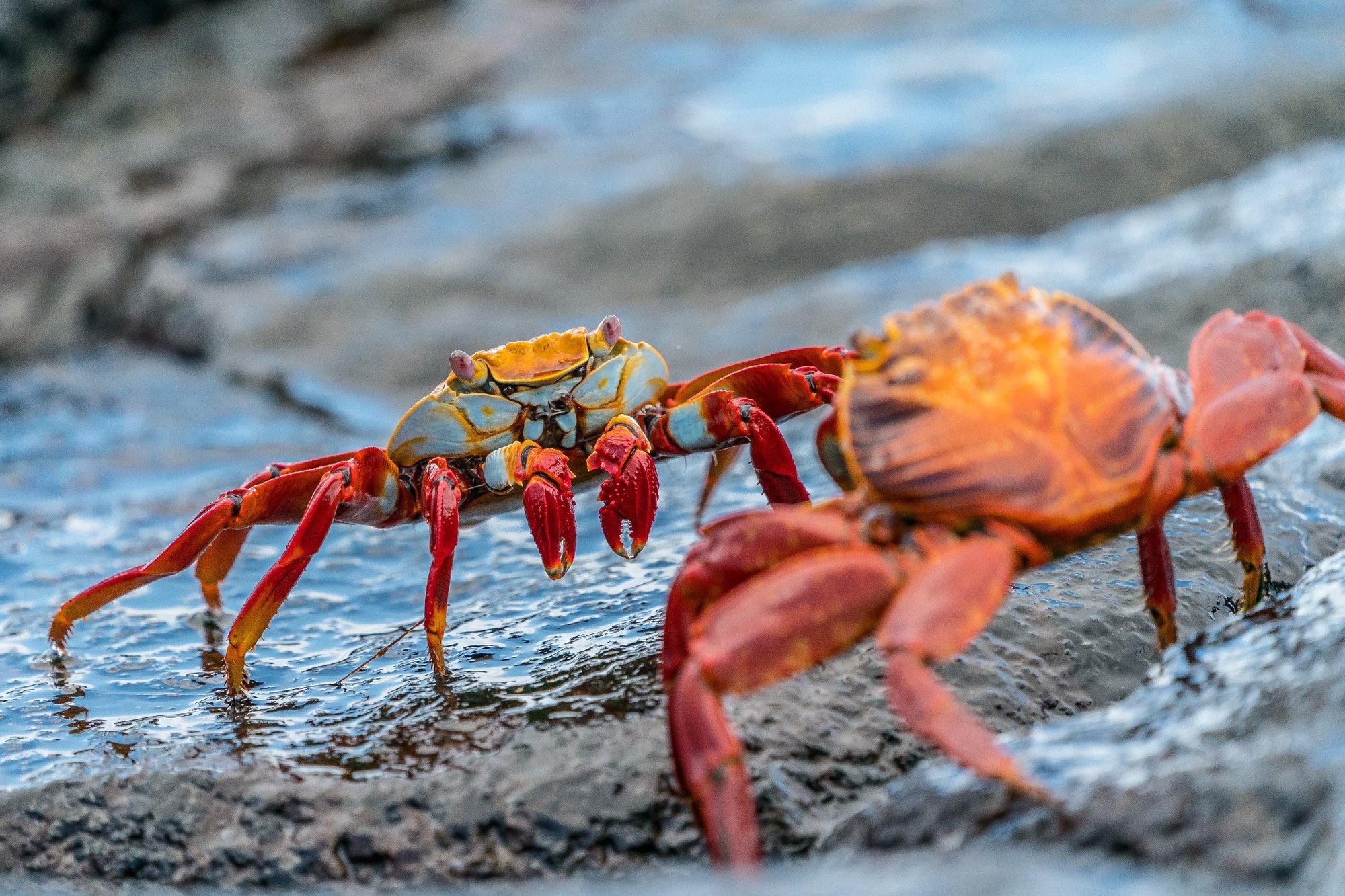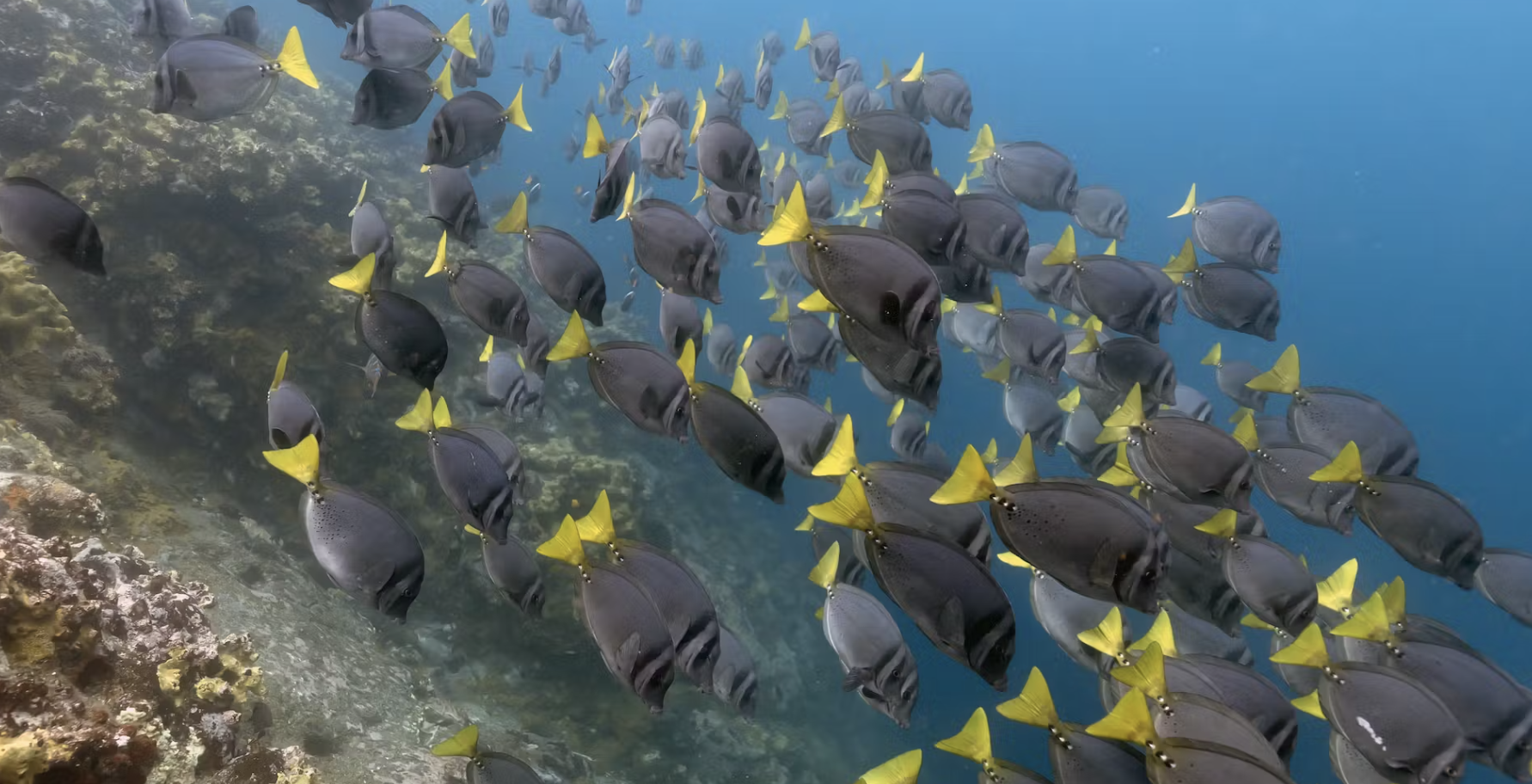
Content provided by our partners at Silversea
It’s a gorgeous sunny day when I arrive on San Cristobal, the easternmost island in the Galapagos archipelago. Scores of sea lions lounge on the beach. Cloudless cobalt skies spread far into the horizon, and the sun shines gloriously above us.
It’s the very same island where celebrated naturalist Charles Darwin arrived aboard the HMS Beagle in 1835. I feel a tremendous sense of achievement in simply being here on these volcanic islands, in the west of Ecuador. It is where the naturalist once explored and collected observations for one of the world’s most famous works of scientific literature. Darwin forever altered our understanding of how plants, animals and even humans survive in varied and changing environments.
In his seminal 1859 book “On the Origin of Species,” Darwin presented his theory of evolution by natural selection. He wrote:
“It is the circumstance that several of the islands possess their own species of tortoise, mocking-thrush, finches, and numerous plants…these species, having the same general habits, occupying analogous situations and obviously filling the same place in the natural economy of this archipelago, strikes me with wonder.”
It’s hard to believe that the revolutionary paper was published over 160 years ago. It presented his beliefs that all living things on Earth come from a common ancestor. In his work, Darwin theorizes that each species has slowly adapted over generations to best fit their environment. It included ample observations from his time exploring San Cristobal and other islands in the Galapagos archipelago.
Following in the Footsteps of Darwin in the Galapagos
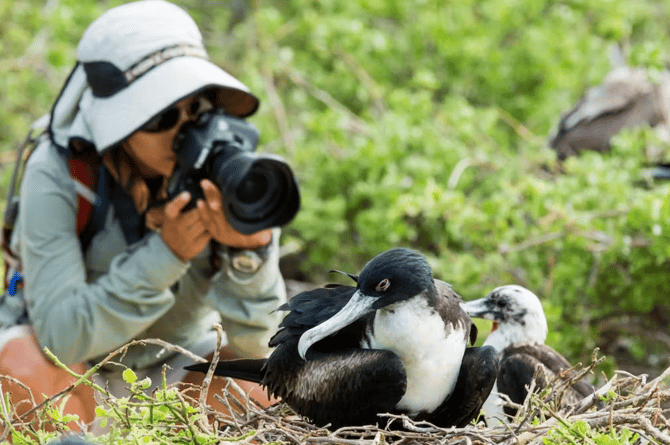
Today, a statue of Darwin stands at Cerro Tijeretas in San Cristobal. It proudly marks the area where great observations began to revolutionize our knowledge of life. Despite the wild nature of the island’s beaches, it’s home to 6,000 people and is the Galapagos’ oldest settlement. Nearly 185 years after the HMS Beagle crew arrived here from the west coast of South America, desperate to find fresh water at the inland Laguna El Junco, the island bustles with human activity. Quaint shops and restaurants line the streets leading towards the beach. It’s heartening to see humans and wildlife living in harmony at such close proximity.
There are 19 islands within the Galapagos archipelago. Many of these are home to various endemic species including the Galapagos tortoise, Galapagos sea lion, and the Galapagos marine iguana. Roughly half of all Blue-footed Boobies nest here too. Regardless of human presence, all the islands teem with wildlife.
According to Gilda Gonzalez, a Galapagos specialist and naturalist guide with Silversea, it’s possible to see the effects of evolution by natural selection in endemic wildlife here. With such knowledgeable local guides available to every visitor, there is the opportunity to learn through expert commentary exactly how certain species have adapted to their environment. It’s this type of remarkable experience that makes a cruise to the Galapagos Islands such a precious opportunity.
Observing the Finches, Mockingbirds and Tortoises of the Galapagos
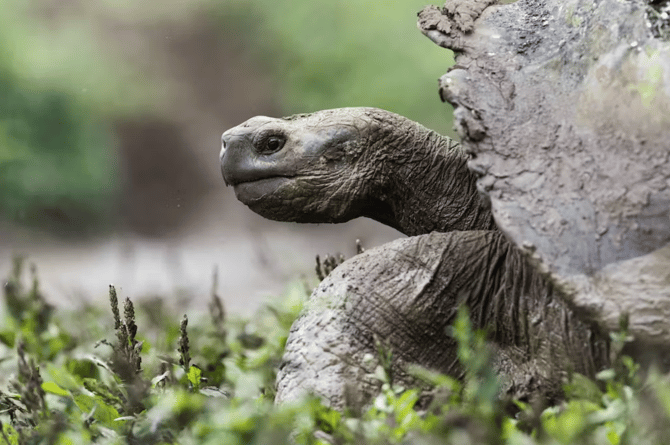
“Most of the animals that live in the Galapagos have gone through adaptations to survive in these harsh conditions,” explains Gonzalez. But Darwin’s finches, named in homage to the famous naturalist, are perhaps the most extraordinary examples of natural selection in the region.
There are 18 established species, each different in their body shape, beak appearance and feeding behavior. For example, finches with fine, long beaks can easily feed on nectar from flowers. Finches with blunt beaks crack nuts or seeds or crush the ticks found on tortoise shells. They would have all come from a common ancestor.
Darwin attributed the success of the species like these, in terms of survival, to adaptations in both physiology and behavior. This became even more evident in the periods of particular climatic change, such as the El Niño and La Niña years, when some finches survived while others perished. “Some species interbred and their hybrids are now their own ‘new’ population,” Gonzalez explains. There is no doubt how the process of natural selection has played an essential role in the survival of the species.
Interestingly, it was not the finch but another of the Galapagos’ birds that made the first big impression on Darwin: the Galapagos Mockingbird. “He could clearly see they were similar to the mainland’s mockingbirds, yet these species were also different,” explains Gonzalez. “In fact, he noticed that much of the wildlife in the Galapagos was different on each island. Yet it was still related to each other and to its mainland counterparts.”
It doesn’t take long to see Darwin’s theory of evolution by natural selection in action once more, this time at El Chato Giant Tortoise Sanctuary on Santa Cruz Island. As the slow-moving beast lazily makes his way along the dry and grassy terrain, my guide highlights the traits that make these giant beings so well-suited to life in an arid environment. The tortoise’s carapace, or hard outer shell, provides impenetrable protection against the elements and predators. His body is much smaller than the shell. This allows the tortoise to survive on less food and to remain cooler for longer in this tropical heat. Perhaps the most impressive adaptation is his unusually long neck, which allows him to reach high into bushes to source food.
The Unforgettable Diversity of the Wildlife in the Galapagos
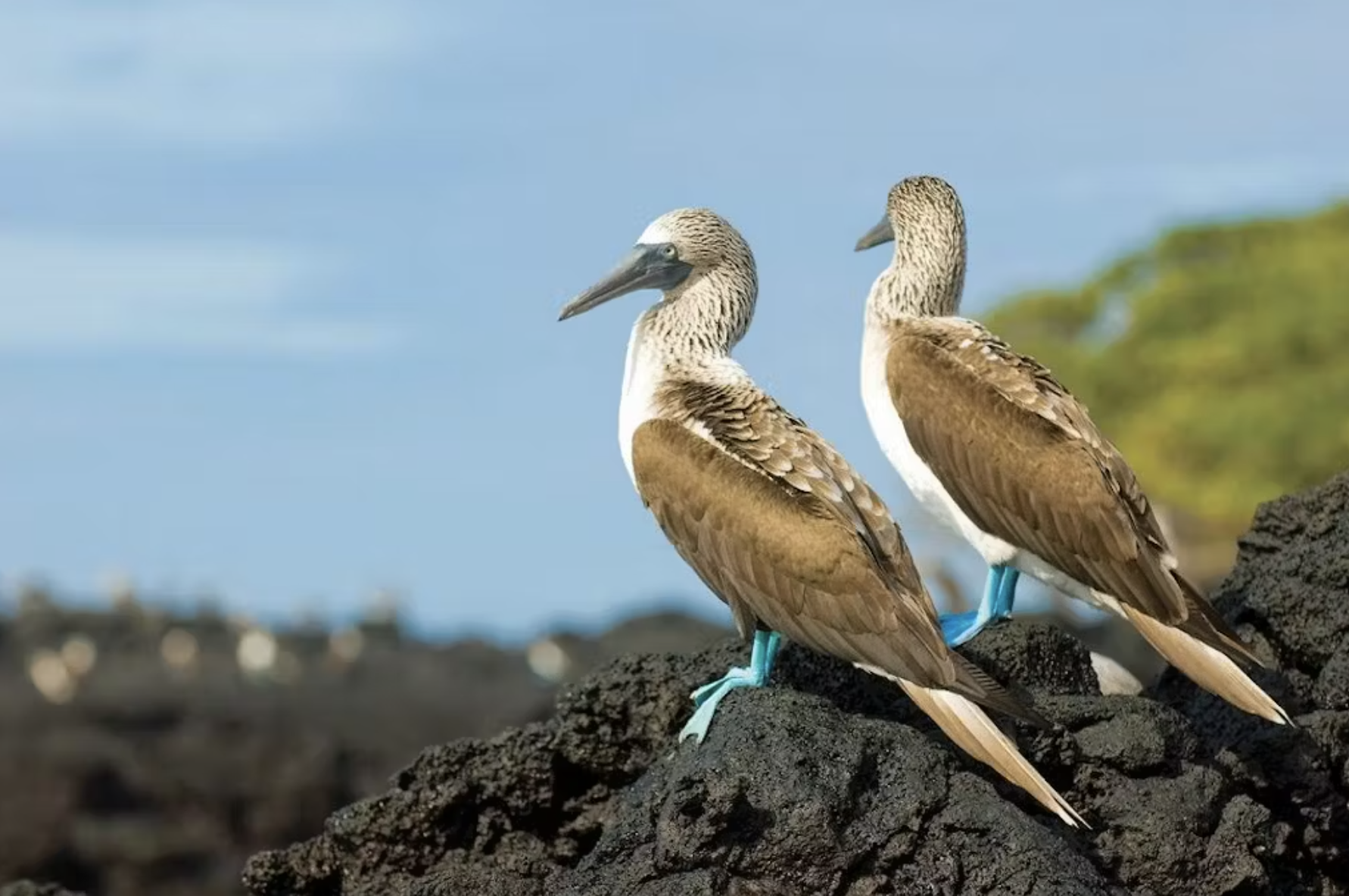
Blue-footed boobies are among the most beguiling of the wildlife in the Galapagos
Back on San Cristobal, both marine iguanas and Blue-footed Boobies bask on the black-volcanic coastline rocks. They watch as we gather our fins, masks and snorkel and take to the crystal clear waters. Once in the ocean, I lay still on the surface to watch as a green sea turtle passes peacefully.
It’s easy to see why the islands provided such fertile ground for Darwin’s observations of the natural world. In the water, both eagle rays and stingrays are a common sight, as are white-tipped reef sharks. Lemon and hammerhead sharks are also known to inhabit these waters. They live in perfect harmony with the colorful reef species such as king angelfish and parrotfish. When a school of hammerheads swims beneath me at Kicker Rock, a famous snorkeling site, my heart races with excitement. I will never forget that moment.
Once home, Darwin set out to identify precisely what he had found while in the Galapagos. He distributed his specimens and notes to various specialists to hear their interpretations. Those findings became widely discussed evidence of evolution by natural selection.
“It was upon hearing back from the specialists that Darwin realized the importance of his collections and how his observations during that voyage had made such an impression,” explains Gonzalez. Darwin was then inspired to document these findings, resulting in the world-changing publication of “On the Origin of the Species.”
With so many close-up wildlife encounters buzzing through my mind, and a first-hand impression of natural selection in the Galapagos, I leave the region in awe of how Darwin managed to compose his findings and ideas into one of the most fundamental and famous scientific papers of all time. His understanding of our natural world means we are here, 160 years after the publication of his most famous work, celebrating one of the most significant biological developments of all time.
Join Silversea on a Thanksgiving voyage to the Galapagos from November 18 - 25, 2023 and enjoy additional benefits when booking with Travelink, including a $300 bonus onboard credit.
Don't wait to book as cabins will fill up quickly. Submit a Trip Request below to get started.
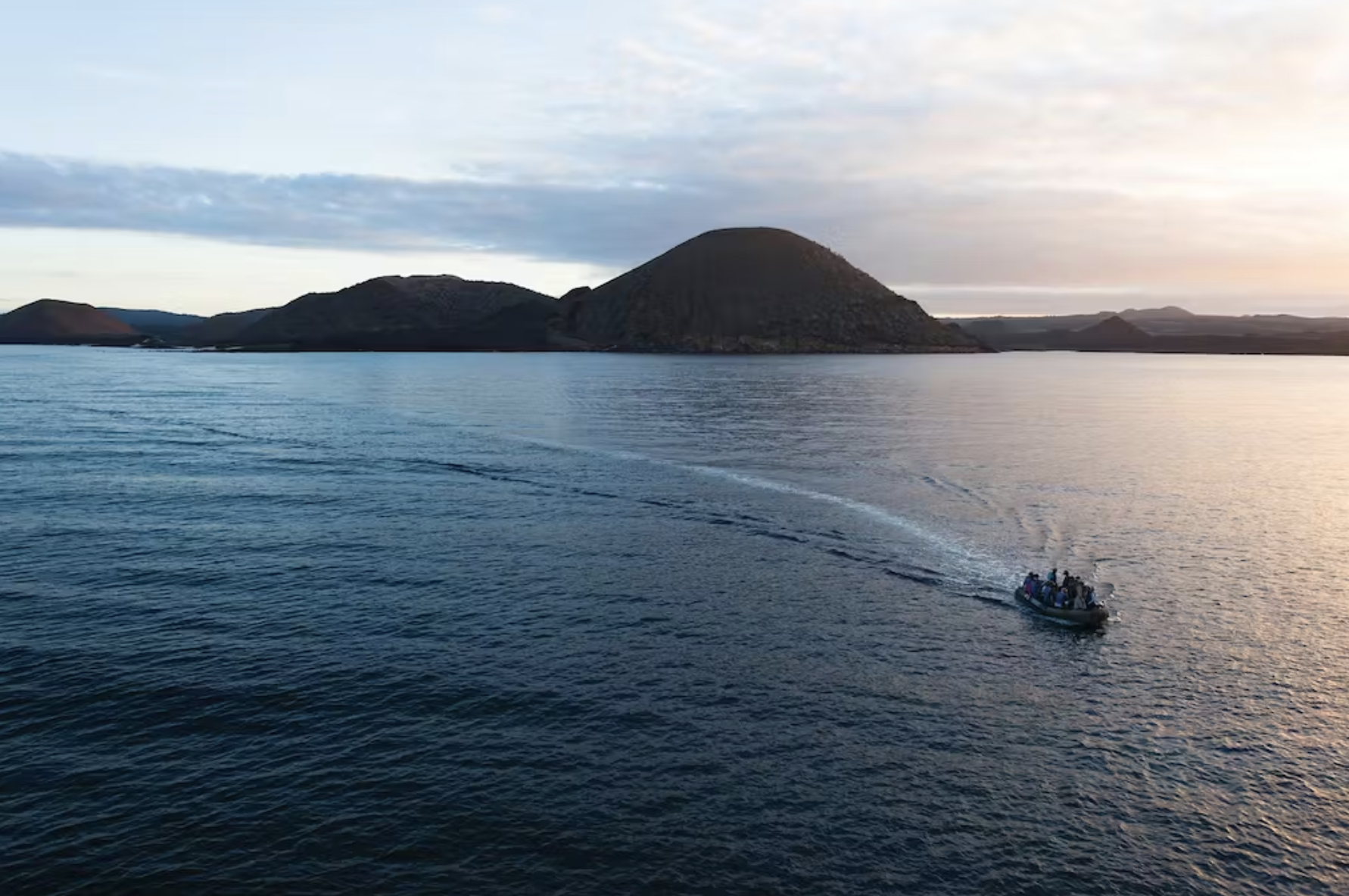

About the author
TRAVELINK
TRAVELINK is headquartered in Nashville, Tennessee and operates nationally with a combination of boutique business call centers and a national network of experienced virtual business travel and leisure travel advisors. Travelink’s client base includes a range of Fortune 500 Corporations, small to mid-market companies, as well as clients from the entertainment industry, sports teams, groups, and religious & non-profit organizations.
Topics: New, Cruises, Luxury, Leisure Travel, Custom Travel
